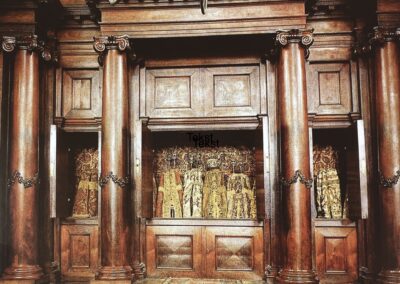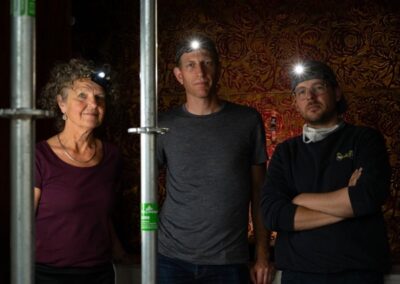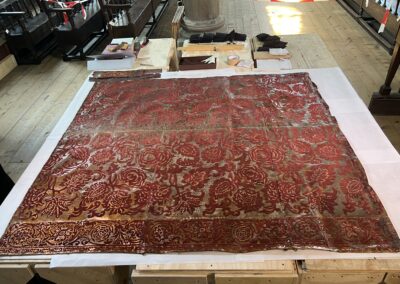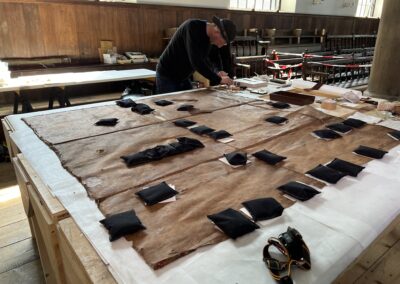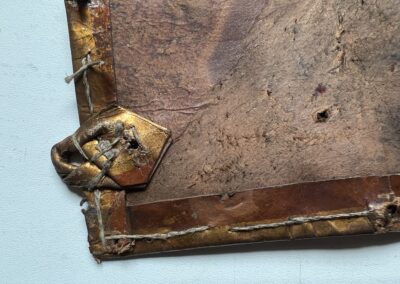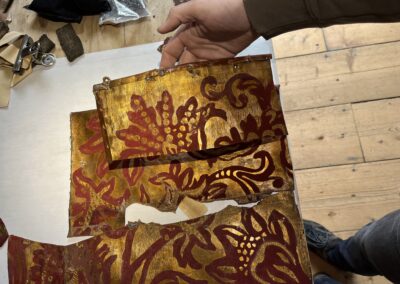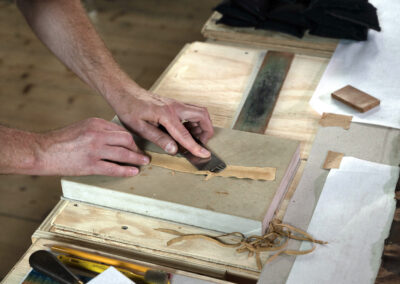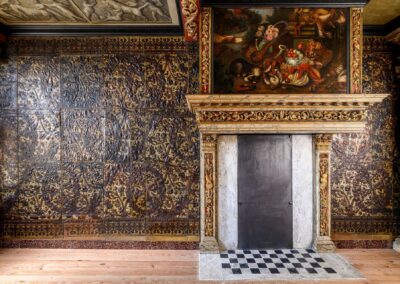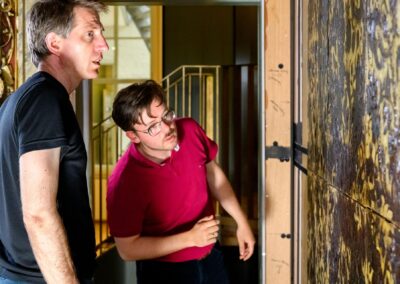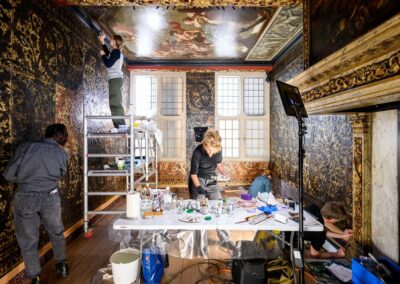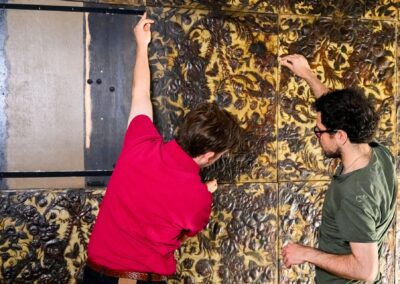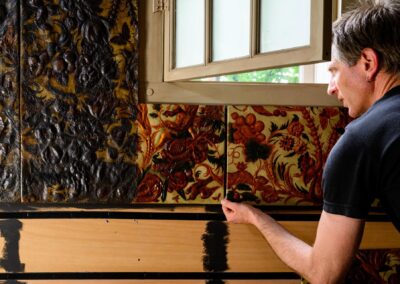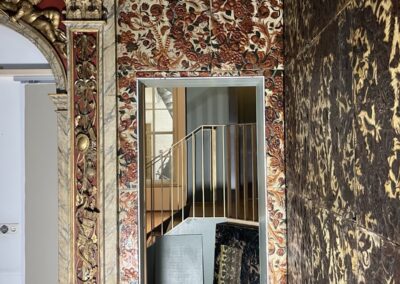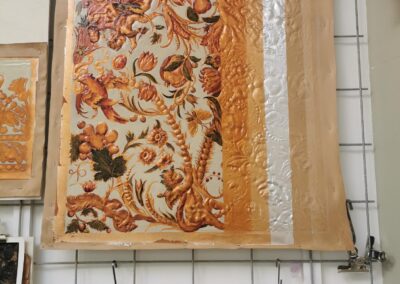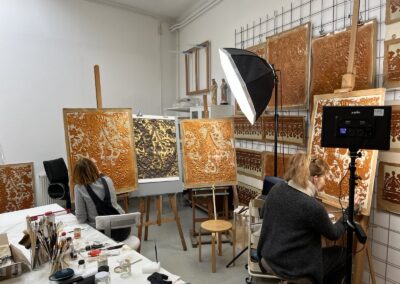Giltleather projects
Nederlands * English * Français * Italiano
Over the past 20 years, in addition to our work on books, prints, anatomical models and charters, RNA has specialised in giltleather. In that time, the studio has carried out more than 13 gold-leather restoration projects.
Luxury wall covering
Giltleather is wall covering consisting of panels of leather measuring about 80 by 60 cm or the leather is glued together to form room-high (vertical) strips sewn together only along their vertical sides . In several historic houses in Europe, beautiful rooms with giltleather can be seen. The leather panels are sewn together so that they cover entire walls.
Imagine walking into such a chic room in the 17th or 18th century: the leather walls reflect the brilliant light of the candles. To create this glitter effect, the leather is covered with thin sheets of silver. This silver was then covered with a yellow varnish, making the reflective silver look like gold.
Giltleather was a true luxury product. Three centuries ago, if a rich citizen wanted to impress his guests, he would receive them in their golden room. Giltleather is full of patterns with flowers, butterflies, birds, putti and wreaths. In the seventeenth century, these were first beaten into the varnished leather piece by piece using hand tools, but as the century progressed, the process was sped up. The leather was pressed into large moulds using a cylinder press.
Making new giltleather
We further developed the giltleather production process for the restoration of the gold-leather room of Museum Huis Van Gijn in Dordrecht. The room had been incomplete for some time, so the missing giltleather panels had been supplemented with prints on paper. The Museum wanted its visitors to experience entering a giltleather room. We therefore suggested replacing the prints with new real giltleather. This did require rediscovering the production process with modern techniques.
We used sulphur- and metal-free vegetable-tanned leather from Siegel Leathers & Biokimika. This leather has been studied with artificial ageing by Dr. René Larsen with very positive results. Historically, giltleather is coated with silver leaf. However, when silver oxidises, it turns black – one of the reasons why old giltleather now often looks dark. We have had the new giltleather researched by René Larsen so that we can make a product that remains beautiful for a very long time.
Conservator Martine Posthuma-de Boer takes care of the image side: she silvered, varnished and painted the leather once we pressed it into the mould. The mould is engraved in a metal plate based on a 3D scan of an original panel. During the process, we get an impression of what the leather must have looked like when it was just made.
An innovative suspension construction
Like other organic materials, leather shrinks and stretches with fluctuations in humidity (see the video showing the moving leather below). In recent years, several restoration projects have installed a monitoring system to measure the deformation. On a four-by-five-metre wall, the leather can already move several centimetres with fluctuations in relative humidity of 40%. In historic buildings, this can take place with seasonal changes.
To prevent the leather from tearing itself loose from the wall, we have developed the RNA-Brands Suspension System together with Godfried Brands over the past twenty years. The construction gives the leather room to move with it, so that the tension remains constant and it does not hang loose or tear itself loose. Both the suspension construction and research on the shrinkage and growth of the giltleather will be published at the ICOM-CC conference in Valencia in 2023.

